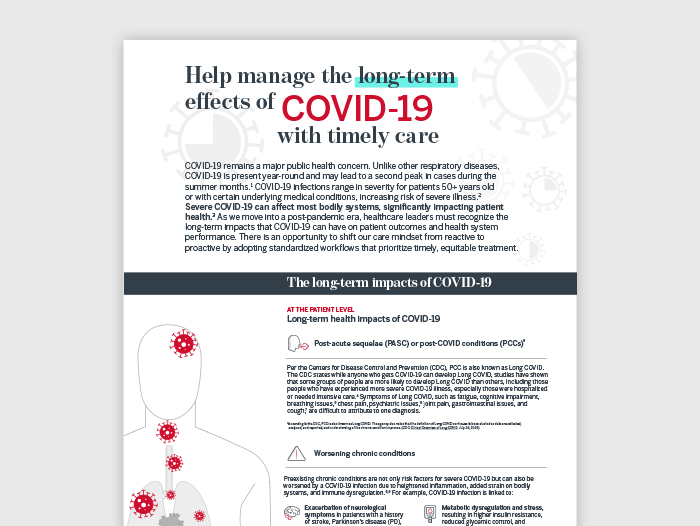Auto logout in seconds.
Continue LogoutA new COVID-19 variant called NB.1.8.1 is spreading worldwide and has led to an uptick in cases and hospitalizations in some areas, particularly Asia. Although the prevalence of NB.1.8.1 in the United States is currently low, the variant is highly transmissible and could potentially lead to a new surge in COVID-19 cases this summer.
What is NB.1.8.1?
In January, a new COVID-19 variant NB.1.8.1 was first detected in China. Since then, there have been 518 reported cases of NB.1.8.1 in 22 different countries, including the United States.
On May 23, the World Health Organization (WHO) designated NB.1.8.1 as a variant under monitoring. As of May 18, NB.1.8.1 made up 10.7% of all COVID-19 cases worldwide. "While still low numbers, this is a significant rise in prevalence from 2.5% four weeks prior."
Although countries with high prevalence of NB.1.8.1 have seen increases in COVID-19 cases and hospitalizations, there is currently no evidence to suggest that NB.1.8.1 causes more severe disease than the other COVID-19 variants currently circulating. So far, symptoms from NB.1.8.1 appear to be similar to earlier COVID-19 variants and include fevers or chills, cough, shortness of breath, loss of smell or taste, and fatigue.
"With each new variant, what we've seen is severity doesn't really change so far, we're not seeing it have more severe complications," said John Brownstein, chief innovation officer at Boston Children's Hospital.
However, NB.1.8.1 may be more transmissible than other COVID-19 variants, which means it could infect more people more quickly.
"NB.1.8.1. is likely to spread more rapidly and evade our immune defenses more easily than LP.8.1 [the currently dominant variant in the United States], which is why this variant requires careful monitoring," said Subhash Verma, a professor of microbiology and immunology at the University of Nevada, Reno.
Will the US see a summer COVID-19 surge?
The NB.1.8.1 variant was first detected in the United States in late March and early April among international travelers who arrived at airports in California, Washington, Virginia, and New York City. It has also been detected in Arizona, Ohio, and Rhode Island. According to CDC, less than 20 cases of NB.1.8.1 have been reported in the United States as of May 27.
Although the prevalence of NB.1.8.1 is still low in the United States, infectious disease experts say that it could potentially lead to a new surge of COVID-19 infections since the country has not experienced a COVID-19 wave in a while and population immunity has likely waned since less than 25% received the latest COVID-19 booster.
"It may unfortunately come back with a little bit of vengeance on us," said Thomas Russo, chief of infectious diseases at the University of Buffalo Jacobs School of Medicine and Biomedical Sciences. "Let's hope that doesn't happen, but I am concerned that we may be setting ourselves up for that with this combination of factors."
Separately, Scott Roberts, associate medical director of infection prevention at the Yale School of Medicine, noted that COVID-19 cases typically increase twice a year in the summer and winter regardless of what variant is circulating.
"I'm going to go ahead and guess that it's [NB.1.8.1] going to lead to an uptick in the summer — probably a mild to moderate one," Roberts said.
In addition, Roberts recommended that people haven't been vaccinated or had COVID-19 recently get a booster shot now if they're eligible. According to WHO, currently approved COVID-19 vaccines are expected to still be effective against NB.1.8.1.
"This is the natural path we've seen with every variant, and so the guidance doesn't really change at the end of the day," Brownstein said. "It's making sure people are up to date with their vaccines and boosters ... and then of course, those that are immunocompromised or in high-risk groups may want to layer in other types of interventions like masking or being careful about large group settings where there could be increased risk of transmission."
(Bendix, NBC News, 5/29; Iranpour, ABC News, 5/28; Fiore, MedPage Today, 5/29; Reyes, New York Post, 5/27; Cross, USA Today, 5/29)
Don't miss out on the latest Advisory Board insights
Create your free account to access 1 resource, including the latest research and webinars.
Want access without creating an account?
You have 1 free members-only resource remaining this month.
1 free members-only resources remaining
1 free members-only resources remaining
You've reached your limit of free insights
Become a member to access all of Advisory Board's resources, events, and experts
Never miss out on the latest innovative health care content tailored to you.
Benefits include:
You've reached your limit of free insights
Become a member to access all of Advisory Board's resources, events, and experts
Never miss out on the latest innovative health care content tailored to you.
Benefits include:
This content is available through your Curated Research partnership with Advisory Board. Click on ‘view this resource’ to read the full piece
Email ask@advisory.com to learn more
Click on ‘Become a Member’ to learn about the benefits of a Full-Access partnership with Advisory Board
Never miss out on the latest innovative health care content tailored to you.
Benefits Include:
This is for members only. Learn more.
Click on ‘Become a Member’ to learn about the benefits of a Full-Access partnership with Advisory Board
Never miss out on the latest innovative health care content tailored to you.

